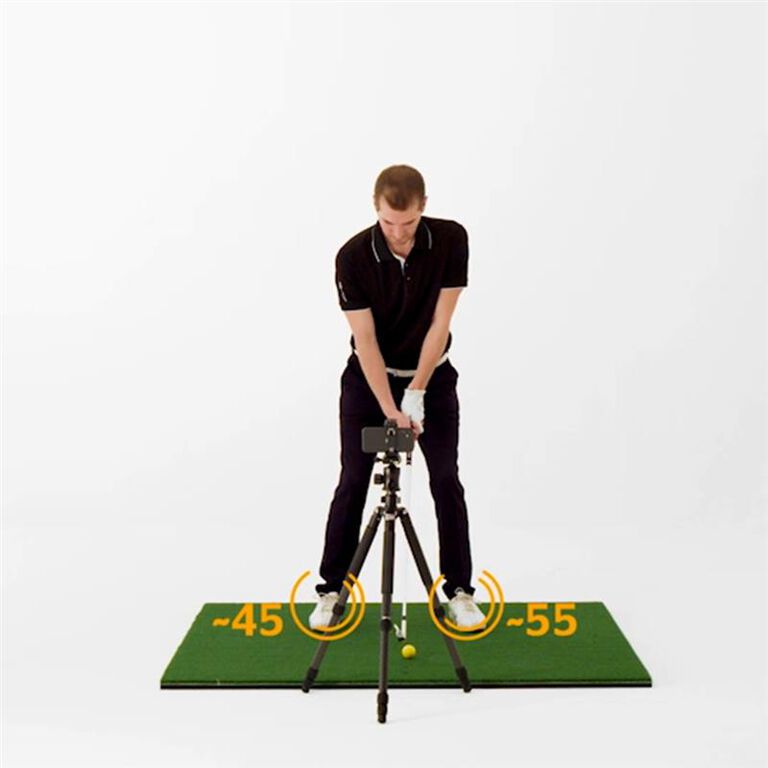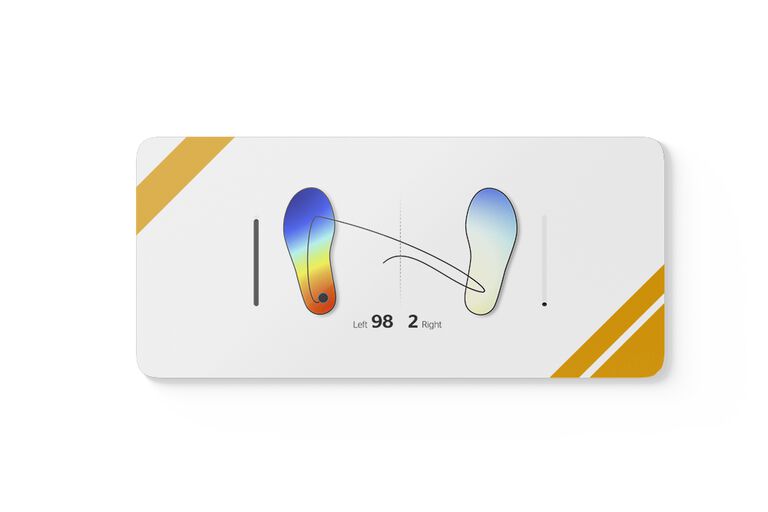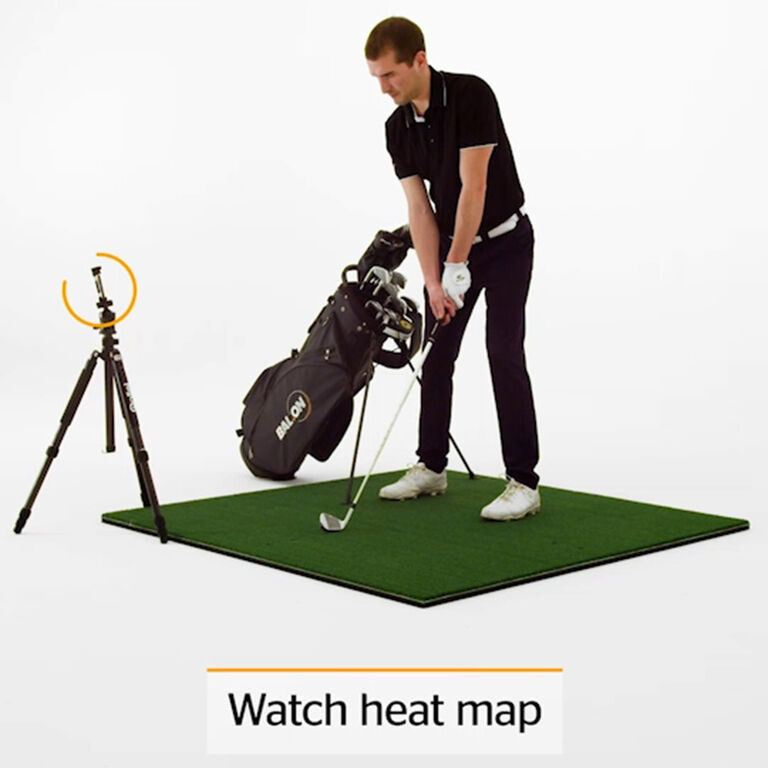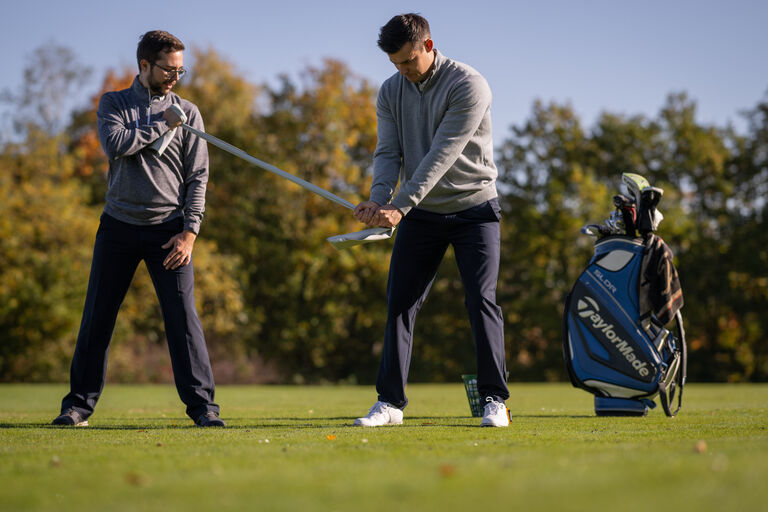Golf balance
Find your balance in golf and start playing better
Balance in golf is almost inversely popular to its importance. In a way, this is understandable, because, as a spectacle, it is not as exciting as other aspects of the game. Stance, breathing and linkage are supremely important in boxing, yet that’s usually not what people look for, when they watch a fight. The same goes for golf: spectacular drives, genial escape shots, frightfully unlikely putting attempts is what catches our attention. However, we are not as intrigued by the one element all of these feasts rely on – balance.
Of all the golf exercising you have gone through recently, how much was consciously devoted to balance? And yet we believe it to be the fundament to all the strength building, all the power generation, all the upper body action that captures golfers’ imaginations. So much so that the term even inspired our product’s name: “BAL.ON” is simply short for “Switch your balance on”!
How to improve your balance
Let’s get one obstacle out of the way first: all golfing and all golf training is so individual that most coaches are hard-pressed to claim certain fixed values as binding for everyone. So, whatever we recommend should not be understood as an absolute figure but within a certain bracket of at least 10%, give and take. On the other hand, for exercise and improvement to happen at all, players need some direction. This is why we end up with the values we recommend, and in this spirit, they should be understood and practiced.

To improve your balance, try achieving the right ratio first: lead leg about 55% pressure, trail leg at around 45% pressure.
As a right-handed golfer, your left leg is your lead leg, and your right leg is your trail leg. For left-handed golfers it’s the other way around, of course.
It is up to you and your goals for your training whether you’ll keep the pressure more in the heel area or in the front foot. Some players are able to generate more power when their heels are firmly grounded, others find more joy in keeping the pressure in mid-foot or even the toe area. Experiment a little and monitor yourself with the BAL.ON heatmap, it can be fun. It can also be eye-opening, because the heatmap’s objectivity can be an interesting counterplay to what you have thought or felt before.
The innards of the golf swing – build stability for better shots
Maybe a good idea to guide your training is to conceive balance as something static and dynamic at the same time. Your stance should be balanced, but your ability to move in it efficiently also relies on balanced muscle groups. To achieve this, you might have some strength training coming your way, usually of the lower core muscles, glutes, and legs. A good way to increase both strength and stability is also to do some proper stretching.
Training aids
One addition to the market we can recommend, out of shameless egoism, but also because it’s simply a great and reliable tool is the live heat map within the BAL.ON smart app. Train with the heatmap often, aim for the 55/45 pressure ration mentioned above, and, once achieved, stop to learn how this feels. The more you get this feeling grounded, the easier it is to replicate a balanced stance.

Weight distribution
The weight distribution should be almost equal, but slightly favoring the lead leg. At BAL.ON we’d like to talk more about pressure than weight, as pressure is what our force resistance sensors measure. So, for the sake of power generation in the golf swing, let’s stick with the distribution and shifting of pressure, rather than weight. As mentioned above, aim for a pressure distribution of about 55% on the lead leg and roughly 45% on the trail leg.
Let the feeling of this specific distribution pattern sink in. As curious as it sounds, to train the feeling is just as important, maybe even more important than training the technique.

In our BAL.ON in-app drills, we favor the sparse wording – here's the longer instruction: watch the heat map and aim for a pressure distribution of roughly 55% on the lead leg and about 45% on the trail leg. Make it your default setting for setup.
Variations of the golf stance
The width of your stance varies, depending on what you’re hitting. The generally accepted yardstick is the famous “shoulder width”, which we also use in our BAL.ON drill videos. Especially if you are very athletically built, with wide shoulders and a narrow hip, the shoulder width can be a tad misleading. It does work for the vast majority of players, though. If you find you have trouble with this measure, try navigating into your stance using the hip width, the BAL.ON heatmap and common sense. Pigeonhole your width as follows, bearing in mind that the stance generally widens with the club length:
- Mid to long irons and hybrids: shoulder width
- Fairway woods: slightly wider than shoulder width
- Driver: wider than shoulder width, almost horse-riding stance (provided you can rotate well in it – if not, shorten the stance)
- Wedges and short irons: less than shoulder width till a fist’s space between your feet
- Putter: anything goes, including closed feet
Work from the ground up. Keep your knees flexed and bend from the hips. Do not bend from the knees, bend from the hips. It appears a tiny difference. It isn’t. Enjoy a moment of stillness before going into action.
Optimizing your equilibrium – golf workouts
Most ambitious golfers are no strangers to the gym and all aspiring tour players are in fact avid gym goers. That being said, blokes tend to overdo it. Keep in mind that technique is still key to everything else. For the teams BAL.ON works with, a ratio between technique and strength training of at least 3:2, sometimes better 4:1, has proven successful. Otherwise, a good stretching session and a bit of physical exertion can round off your golfing just perfectly.
Start stretching
General stiffness is like a natural antagonist to balance. Losen up, explore your joints’ full mobility of range, and stretch your muscles to offset it. The lizard lunge for example is a great way to open your hips and stretch your hip flexors. The same goes for the royal pigeon and the supine twist, a formidably important stretch for golfers. Be sure to check out our article on yoga poses for golfers.
Single-leg exercises and glutes
If you can do things on one leg, you will almost automatically increase your sense of balance. You will also, believe it or not, increase your likelihood of longevity. Single-leg hip circles are a good example to start with. Stand naturally, raise your right thigh and perform circles with the kneecap, inward-out ten times, outward-in ten times, then change the leg. Mind that you shift a tiny bit towards the supporting leg before the leg-raising takes place (to stand solidly on your one standing leg). Register these tiny shifts. It puts you in a great stead for the bigger shifts involved in swing improvement.
Another great way to offset the sedative lifestyle that plagues most golfers today is strengthening the glutes. Any exercise is welcome here, from simple squatting to Romanian deadlifts, weighted or unweighted. Just work this huge, mostly unworked muscle and enjoy what it can do for your golfing, once it is aptly trained!
Resistance against a rubber band
Try and do the swing moves, or parts of the swing move against the resistance of a good rubber band. That usually requires the support of a training buddy, but it’s more fun to do this in pairs anyway. For all the resisting, don’t forget to maintain balance! That’s also a great way to use the BAL.ON heatmap: see whether, even working against the rubber band, you can produce the target value for balance mentioned above …

FAQ
What is balance (as understood by BAL.ONistas)?
At BAL.ON, we usually refer to the setup. For us, it is a composite of a good stance and a pressure distribution of roughly 55% on the lead leg and about 45% on the trail leg. It is up to you and your goals whether you center the pressure more in the toe area of the foot or the heel area.
How do you maintain balance in golf?
Firstly, by recognizing it for a factor that’s worth training in its own right. It is largely underestimated. Hence our setup drill, the live heatmap etc. Secondly, by referring to it over and over again. Working on it is no one-off, it should be a constant.
How does balance affect my golf swing?
As it is your fundament, it is difficult to achieve anything worthwhile if your fundament is tilted. Or more positively, once your balance is solid, everything else, the backswing, the timing, the impact, the finish, has a greater chance of running smoothly.
How do I stop losing balance in my golf swing?
By heeding our drills, especially the setup and generic pressure drill. Maybe you are also simply trying too hard. Do the same swings with 50% of your power, or start at half-backswing first. Lost balance can be an indicator of over-zealous power generation.

